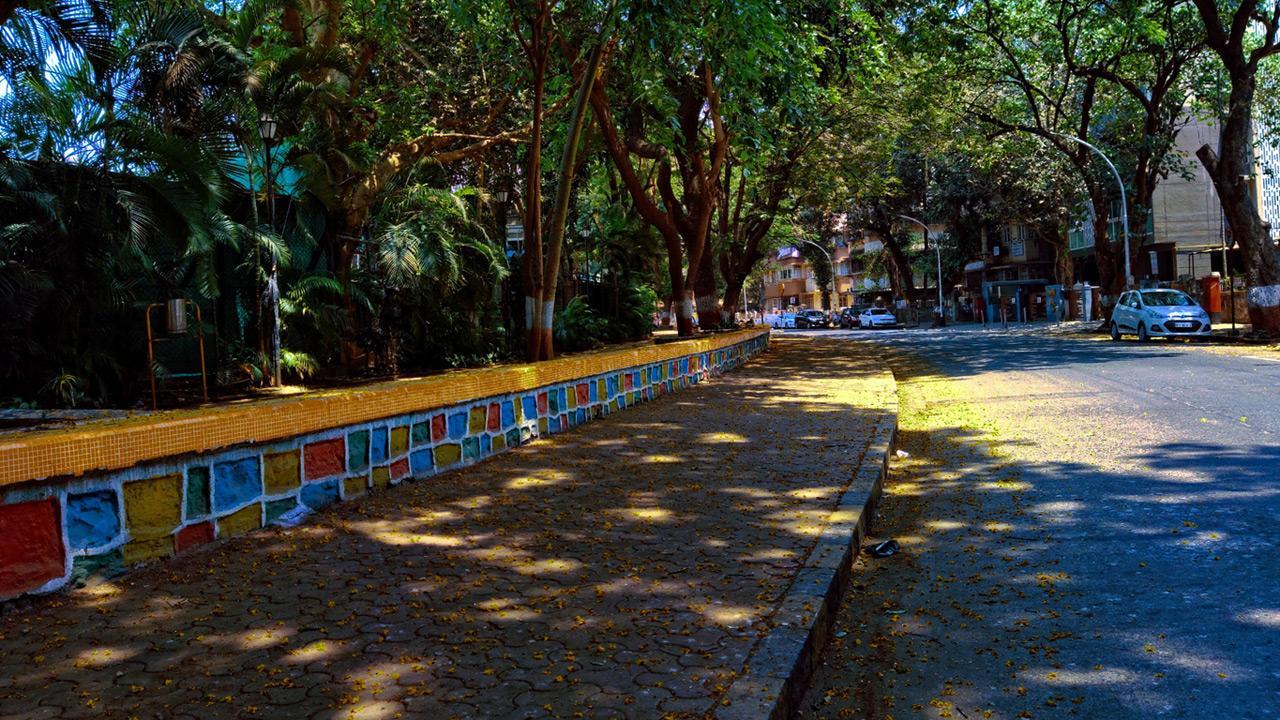It’s been a year since city historian, architect and Matunga-born Kamu Iyer passed on. The rapid changes in the original streetscape of the areas that went on to influence his research, were a matter of huge concern to him

Representation pic. Pic/iStock
 It’s a view that I cringe to look at each time I pass by the Matunga-Dadar stretch along Dr Ambedkar Road [formerly Kingsway]. The uneasiness worsens if the waiting time increases, and I am forced to glance from the window of my kaali-peeli at countless concrete monstrosities that stand cheek-by-jowl on either side of this busy road. I also realised that the names of these residential palaces are a chuckle-worthy fusion [if you wish to look at the lighter side of these aberrations]. A majority are twisted combinations — borrowed heavily from inter-stellar galactic phraseology and the exhaustive repository representing Hindu gods and goddesses.
It’s a view that I cringe to look at each time I pass by the Matunga-Dadar stretch along Dr Ambedkar Road [formerly Kingsway]. The uneasiness worsens if the waiting time increases, and I am forced to glance from the window of my kaali-peeli at countless concrete monstrosities that stand cheek-by-jowl on either side of this busy road. I also realised that the names of these residential palaces are a chuckle-worthy fusion [if you wish to look at the lighter side of these aberrations]. A majority are twisted combinations — borrowed heavily from inter-stellar galactic phraseology and the exhaustive repository representing Hindu gods and goddesses.
ADVERTISEMENT
It is these saas-bahu TV serial set-like lobbies, garishly designed marbled archways and the ‘landscaped garden-cum-spa-cum-swimming pool’ dreamy universe that represents new Matunga and new Dadar. It’s a painful imagery, if you’ve been a regular to this area for decades together. The late Kamu Iyer, who spent his childhood and most of his adult life studying its unique character and architecture, would often rue it in his writings and his conversations. I was fortunate to have had the opportunity to pick his brains on several occasions about this slow phase-out of his beloved Matunga and Dadar. One of his books, Boombay: From Precinct to Sprawl, evocatively traces the changes in these parts from the 1940s. Largely written from his own experiences, as a student, and later as an architect and teacher, I find myself leafing through its pages [and subconsciously seeking solace] as if on autopilot after each such glance of these neighbourhoods. It’s a different story altogether that it remains one of my favourite go-to books for a 360-degree insight into the architecture and socio-economic documentation of central Bombay.
You don’t need to be a rocket scientist, an architect or a historian, to spot the rapidity of what Iyer and other members of the heritage community remain worried about. Ask any old-time kirana-wallah or 50-something from the area, and s/he will rattle off all that they continue to witness. Even when we batch mates from my alma mater, Ruia, catch up, these days on virtual platforms, this topic doesn’t escape our conversations. Having spent five years of our lives here, roaming around the nearby gullies and bylanes, it’s a sad realisation to see these charming buildings at the mercy of a faceless, all-encompassing dementor.
Perhaps nowhere is this change more visible than on Bhandarkar Road. A stroll down this quaint mini-Madras can come as a shock for the uninformed who might still possess fond memories from even as recently as a decade ago. Many of the older one-two storeyed structures have been razed to make way for glass-and-concrete citadels; the vibrant flower market looks like a spec from a Lilliputian stage drama. The last time we checked, the countless charming, South Indian stores, a haven for authentic condiments, daily ‘items’ and home essentials that were once popular hangouts for maamis of the area, are far and few.
As you walk down Napoo Road, and enter Hindu Colony, another kind of gentrification will jar the visual template. While some buildings, like Rajgruha, the site that Babasaheb Ambedkar built, thankfully remain untouched, several other buildings within a small radius have disappeared. There is a section in that book where Iyer speaks of the unique feature of the ‘otla’ found in the village house whose equivalent could be seen in balconies in Hindu and Parsi Colony, and in other parts of the city where the Bombay Improvement Trust created new developments in building design. He writes about how it became a space for people living on the same floor to interact with each other and also to vendors and hawkers below. It’s one of the many unique features that he highlights in the book about these structures. Apart from the obviously drastic change to its façades, its street architecture and loss of local historicity, even factors like social engagement have been impacted by such gentrification.
Iyer went to great lengths to spell out countless other important, pro-resident features that were factored in while designing these buildings, and it is for these reasons and many others that define the original template of Bombay that we must sit up, take stock, and act fast with stricter laws, monitoring and guidelines as we continue to lose sweeping sections of streetscape to such mindless, unchecked redevelopment. Truth is these new structures are now in a majority, and not the other way around. A drive on any flyover in the south or central parts of the island city will unravel this insipid, albeit worrying metamorphosis. Iyer’s contribution as a chronicler of the city’s architectural worth went beyond the obvious styles and sites to the lesser-known but equally relevant designs.
In it lies a lesson for Bombay’s true custodians, its urban planners and heritage keepers — to not let the small guy slip away while looking at the big [and in our city’s case, uninspiring] picture.
mid-day’s Features Editor Fiona Fernandez relishes the city’s sights, sounds, smells and stones...wherever the ink and the inclination takes her. She tweets @bombayana
Send your feedback to mailbag@mid-day.com
 Subscribe today by clicking the link and stay updated with the latest news!" Click here!
Subscribe today by clicking the link and stay updated with the latest news!" Click here!







